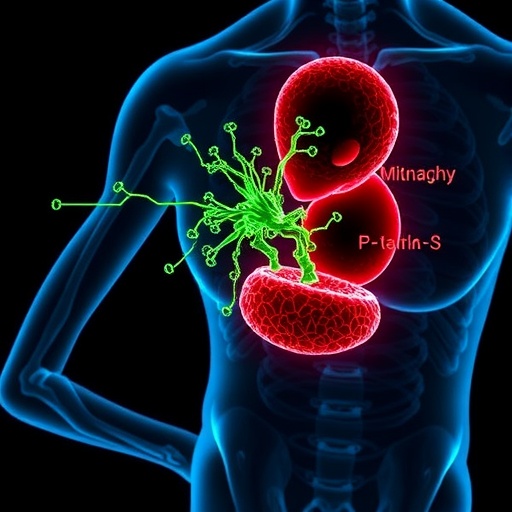
The intricate world of juvenile idiopathic arthritis (JIA) has long fascinated researchers, especially as its prevalence continues to rise in pediatric populations. As a chronic illness characterized by persistent joint inflammation, JIA represents a critical area of study, particularly regarding how it affects children and their quality of life. Recent findings have shed light on the role of serum ferritin levels in these patients, providing new insights into disease activity and the overall disease process.
Ferritin, a protein responsible for storing iron in the body, can serve as both an indicator of iron levels and a marker of inflammation. In the context of juvenile idiopathic arthritis, serum ferritin levels may not merely reflect iron status but could also be indicative of the underlying inflammatory processes. Elevated ferritin levels have been frequently associated with inflammatory diseases, including various forms of arthritis, making it a point of interest for those investigating the nuances of JIA.
In a groundbreaking study conducted by Das, Mosleh, and Talukder, researchers investigated the serum ferritin levels across different subtypes of juvenile idiopathic arthritis. Their findings present a vital perspective on how ferritin levels correlate with disease activity in JIA patients, which could revolutionize how clinicians approach diagnosis and treatment. This research emphasizes the need for continuous monitoring of serum ferritin levels as a potential tool for evaluating treatment efficacy and adjusting therapeutic strategies.
The complexity of JIA subtypes further highlights the importance of such research. There are seven recognized subtypes of JIA, each exhibiting unique clinical presentations and disease trajectories. Understanding how ferritin levels vary across these subtypes can lead to more personalized care, addressing the specific needs of each child based on their unique disease profile. This investigative approach not only enhances treatment options but also improves patient outcomes, ensuring that the focus remains on providing holistic and multifaceted care.
The association between serum ferritin levels and disease activity could potentially reframe current methodologies in evaluating juvenile idiopathic arthritis. Active disease states, often characterized by increased joint swelling and tenderness, could correlate with significantly elevated ferritin levels, indicating heightened systemic inflammation. By integrating ferritin assessment into routine clinical practice, healthcare providers may gain a more dynamic understanding of disease activity and patient responses to treatments over time.
Moreover, the implications of this research extend beyond mere clinical metrics. Understanding the relationship between ferritin levels and disease activity in JIA may strengthen the case for early intervention strategies aimed at managing inflammation more effectively. This proactive approach could ultimately lead to improved long-term outcomes for children struggling with this chronic condition, allowing them to lead healthier, more active lives.
In light of compelling evidence linking ferritin levels to inflammatory markers, a paradigm shift may occur within therapeutic frameworks. The study’s findings emphasize the potential of serum ferritin as both a diagnostic and prognostic tool, suggesting its inclusion in routine assessments for children with JIA. Building a more nuanced understanding of these biomarkers will be critical in shaping future clinical trials and interventions.
Children with juvenile idiopathic arthritis often endure significant physical challenges, which extend beyond joint pain. Fatigue, restricted mobility, and emotional distress commonly accompany the condition, affecting daily functioning. By accurately monitoring serum ferritin levels as part of routine care, clinicians could gain insights not only into inflammation but also into how chronic pain impacts overall quality of life in this vulnerable population.
The emerging evidence underscores the interrelation between systemic inflammation, serum ferritin, and the various subtypes of juvenile idiopathic arthritis. Increased scientific attention toward these relationships can inspire innovative research pursuits aimed at unraveling additional complexities within the disease. Future studies may explore genetic, environmental, and physiological factors that influence ferritin levels, allowing for a comprehensive understanding of the disease etiology.
It is imperative that ongoing discussions around juvenile idiopathic arthritis include comprehensive treatment strategies that account for serum ferritin levels. As healthcare systems become more attuned to the nuances of chronic pediatric conditions, the push for holistic care will gain momentum. This includes considering not just the physical manifestations of disease but also emotional and psychological support for patients and their families.
The study conducted by Das, Mosleh, and Talukder brings to light the urgent need for further exploration into ferritin levels in JIA, framing additional research questions that can guide future inquiries. For instance, how might different treatment regimens affect serum ferritin levels over time? What role could nutrition play in mediating inflammation and iron status in these patients? These unanswered questions could fuel the next wave of research, driving important discoveries forward.
In the context of advancing pediatric healthcare, the implications of ferritin level research can resonate widely. As knowledge and technology continue to evolve, the potential for developing targeted therapies rooted in biomarker research becomes more viable. By continually integrating existing research with clinical practice, the healthcare community can pave the way toward breakthroughs that may significantly alter the landscape of arthritis treatment in children.
As the research community grapples with the growing incidence of juvenile idiopathic arthritis, the call to action becomes clear. Studies like that of Das, Mosleh, and Talukder are instrumental in shifting the focus toward personalized medicine, one step closer to realizing better management strategies tailored for individual patients. Monitoring serum ferritin levels as part of a comprehensive approach could serve as a critical benchmark in enhancing care trajectories for countless children facing the multifaceted challenges posed by JIA.
The journey into understanding juvenile idiopathic arthritis through the lens of serum ferritin levels illustrates the ever-evolving nature of pediatric medicine. Each discovery, each study, underscores the importance of continued research and clinical attentiveness, echoing the commitment to providing children with the thriving lifestyles they deserve. In this quest for knowledge, the pursuit of tailored therapies and comprehensive care strategies stands at the forefront, driven by the insights gained from vital research.
In conclusion, the study conducted by Das, Mosleh, and Talukder highlights an essential connection between serum ferritin levels and disease activity in juvenile idiopathic arthritis. Their findings present a unique opportunity for clinicians to enhance the management of this chronic illness, promoting not only physical health but also the overall well-being of pediatric patients. As the medical community advances, the focus on personalized care integrated with biomarker research may very well be the key to unlocking more effective treatments and improving quality of life for children navigating the challenges of JIA.
Subject of Research: Serum ferritin levels in juvenile idiopathic arthritis.
Article Title: Assessment of the serum ferritin level in patients with different subtypes of juvenile idiopathic arthritis and its association with disease activity.
Article References:
Das, N., Mosleh, T. & Talukder, M.K. Assessment of the serum ferritin level in patients with different subtypes of juvenile idiopathic arthritis and its association with disease activity.
BMC Pediatr 25, 662 (2025). https://doi.org/10.1186/s12887-025-05998-7
Image Credits: AI Generated
DOI: 10.1186/s12887-025-05998-7
Keywords: juvenile idiopathic arthritis, serum ferritin, disease activity, inflammation, pediatric health.
Tags: chronic joint inflammation in childrenclinical implications of ferritin in arthritisdisease activity in juvenile arthritisferritin as a diagnostic markergroundbreaking arthritis studiesinflammation markers in arthritisiron levels and inflammationJIA subtype analysisjuvenile idiopathic arthritispediatric arthritis researchpediatric quality of life and arthritisserum ferritin levels in JIA




